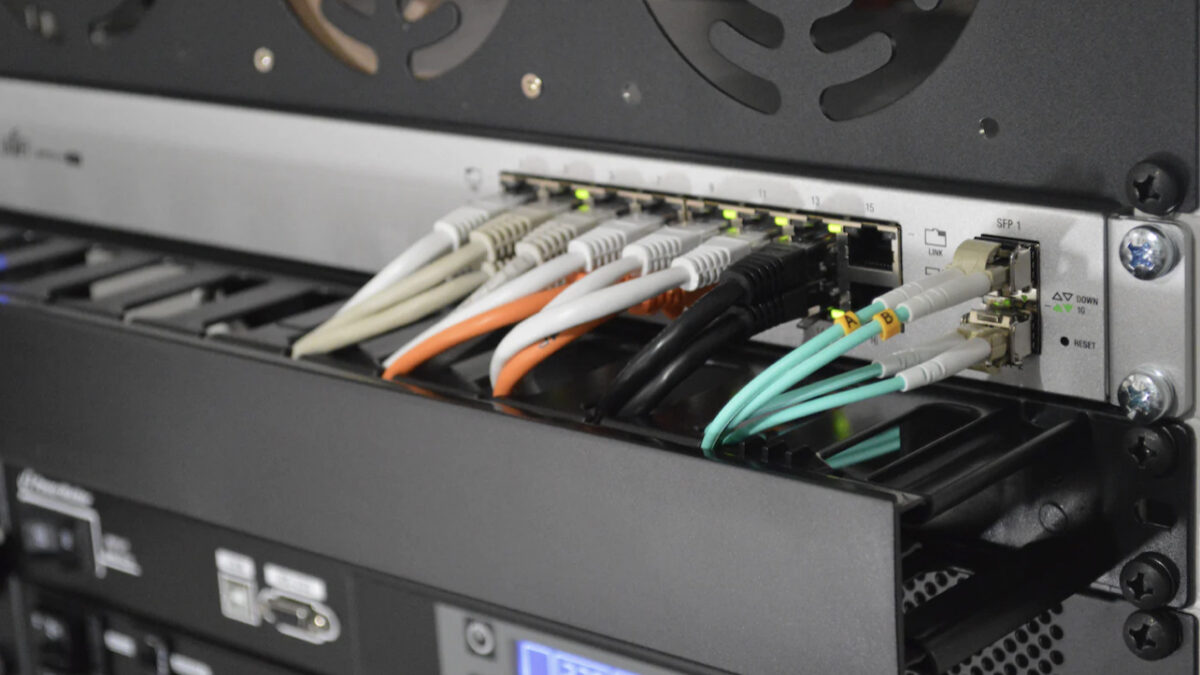The water problem: why data centres use so much and what can be done about it, Part 1

By Fay Capstick
Last week we looked at schemes to reuse the huge amount of heat generated by data centres. This week we will focus on the large volume of water that they use and the impact that this is having. Then we will look at alternatives.
Why do data centres need to be cooled?
The thousands of servers running constantly generate a lot of heat as they process data. It is very important that these servers are kept cool, as keeping them exposed to the heat that they generate can damage the equipment and cause failures.
Cooling systems in the data centres help to transfer the heat away from the sensitive equipment. It is this heat that is being reused in schemes to heat swimming pools and homes. However we need to think about the environmental impact of the methods used to generate this cooling in the first place.
Why use water?
Water is a common method used to keep data centres cool. Water is great at conducting heat and it can absorb this energy and therefore keep the excess heat away from the server banks.
How does it work?
Water is pumped through a series of pipes and heat exchangers, where it circulates and the heat is transferred out. More cooled water is then sent into the data centre where it absorbs more of the heat that the servers have generated, and so the cycle continues.
What is the problem?
The problem is that data centres require a continuous supply of water to operate. The bigger the data centre, the more water they will require to function. This can cause a large environmental impact. In fact, larger data centres may use many millions of gallons of water a day. This is not great for the local water supply, especially in more arid climates.
What alternatives are there?
There are some alternatives cooling methods that data centres are now starting to explore. There is air cooling and liquid immersion cooling. This uses less water, however it comes with a higher energy consumption and unless that energy is generated in a sustainable way that will put extra environmental strain on the planet.
So what is liquid immersion cooling?
Liquid immersion cooling involves literally immersing the electronics of the server, such as CPUs and GPUs, in a non-conductive fluid. This is likely to be a mineral oil or a specially engineered fluid that has a high boiling point (which means that it can stay in a liquid state at high temperatures). The fluid is then circulated through the components. This method will allow the heat to dissipate without using water.
What are the benefits of liquid immersion cooling?
A bonus is that the heat extracted with a heat exchanger, as with water cooling, can be used to meet nearby heating needs. Further, where liquid immersion cooling is more efficient than water cooling it can result in large energy savings. It is more efficient as the coolant is in direct contact with server components. It also doesn’t need fans to circulate air, so it is also quieter. However, most data centres are largely empty of people.
Liquid immersion cooling can also result in a longer lifespan for the server components as they are not being exposed to dust, moisture, and other things that could damage them and reduce their lifespan. A longer turnaround of having to replace parts is a win for the environment and the waste mountain made by obsolete server equipment.
What are the disadvantages of liquid immersion cooling?
The main drawback is the initial cost of the fluid itself when compared with just using water. Also it can pose a risk to the environment if it is not handled and disposed of properly.
Where is it being used?
Data centres are starting to use liquid immersion cooling. Northern Data AG has a bitcoin mining centre in Texas where this method is used. In Spain, Barcelona Supercomputing Centre uses it to cool their many supercomputers. They are using a mineral oil fluid for the purpose.
Can liquid immersion cooling be made more environmentally friendly?
Yes it can. LiquidStack has a coming fluid that uses a non-toxic, dielectric fluid for immersing the hardware. A dielectric is an electrical insular that can be polarised by an applied electrical field. And a fluid dielectric is a dielectric material in a liquid state. This method is 32% cheaper than air cooling, with a 41% energy reduction. You can read more about LiquidStack here: https://liquidstack.com/ . This is a definite growth area in the industry.
Next week we will go further and look at another alternative to water cooling: air cooling. Plus will also look at what steps can be taken to reduce the environmental impact of data centres.
Final thoughts
At Parker Shaw we have been at the forefront of the sector we serve, IT & Digital Recruitment and Consulting, for over 30 years. We can advise you on all your hiring needs. If you are looking for your next job in the IT sector please check our Jobs Board for our current live vacancies at https://parkershaw.co.uk/jobs-board
